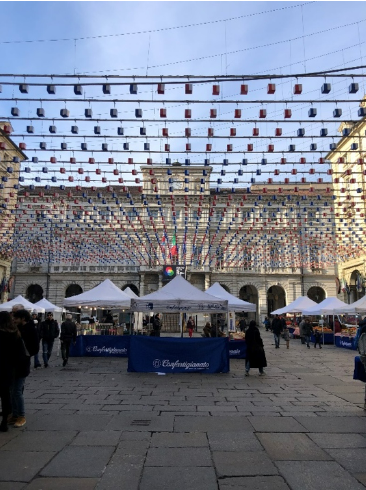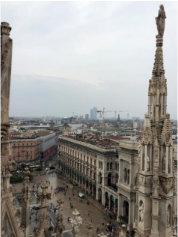Hello everyone,

Today, I’m taking you on a thought tour through the squares of European cities. There is something I want you to think about during the trip. Before you start reading the article, can you think about what the concept of getting together means for you?
Humans have lived with the instinct of being together since their existence. Being in a community, not being alone, being together and the concept of belonging are an unchangeable parts of our lives. While these concepts affect our lives sociologically, they shape our living spaces and our environment in terms of architecture. The need to gather together leads us to a place. The area where we gather is formed and designed with the purpose of our meeting. I would like to talk about old cities in order to revive this
phenomenon in your mind. Squares are one of the spatial formations that do not disappear and do not change in the journey from ancient cities to modern cities. Today, these squares actively serve the same purpose in all European cities. In my opinion, one of the most up-to-date examples of this concept is the New Year’s Eve markets set up in European squares for Christmas celebrations last month. Those who gathered in the
square tasted the spirit of Christmas by participating in the markets designed according to the concept of Christmas. As an architect, I suggest that the spirit and design of the place is formed in line with the purpose and traditions of the people there.

If we reduce this to the most specific, gathering around the table works with the same concept of gathering in the squares. The squares in the cities are like the tables in the houses and the rooms where the tables are. A family gathers around the table. Starting from this, around the table is the place where the inhabitants of the city (family) come together, rest, fight, rebel, marry, break up, laugh, cry, take a break, move on, give up or get discouraged and share all these feelings and actions. It is the square of the city they live in, that is, their house. In Europe, these areas were formed in front of churches. The squares in front of the church have remained a constant and defined area throughout the ages. These are the places where all the streets of the city intersect.
As someone who has lived in Milan during my education life, the Duomo Square was such a place for me. In the city, no matter how far I went, even though I was passing through unknown streets, eventually, I would find myself in the Duomo Square. The city is a spiral system that circles around the square. No matter how far you go, you find yourself in the square, in the middle of life. I associate this action with returning home and gathering
around the table with your family at the end of the day, no matter where you go during the day, no matter how far you go, no matter what you go through.

If the city is a house, the table creates the square of the house. Wouldn’t you like to experience the ritual of gathering around the table set in your home in the city square? The idea of gathering the inhabitants of the city around a huge table set in the square at the end of the day and designing this table, square, according to the purpose of gathering has always excited me.
In the shadow of the buildings surrounding the square, I want you to imagine a huge table where people with very different lives sit, no matter how far they go, who find themselves in that square at the end of the day. I leave the design of the table and the square to your imagination.
Hope it will be a pleasant design for all of you.
Simin PAKAKAR
Co-founder of Kanopi Architecture
Istanbul, Türkiye
Instagram: @kanopimimarlik


